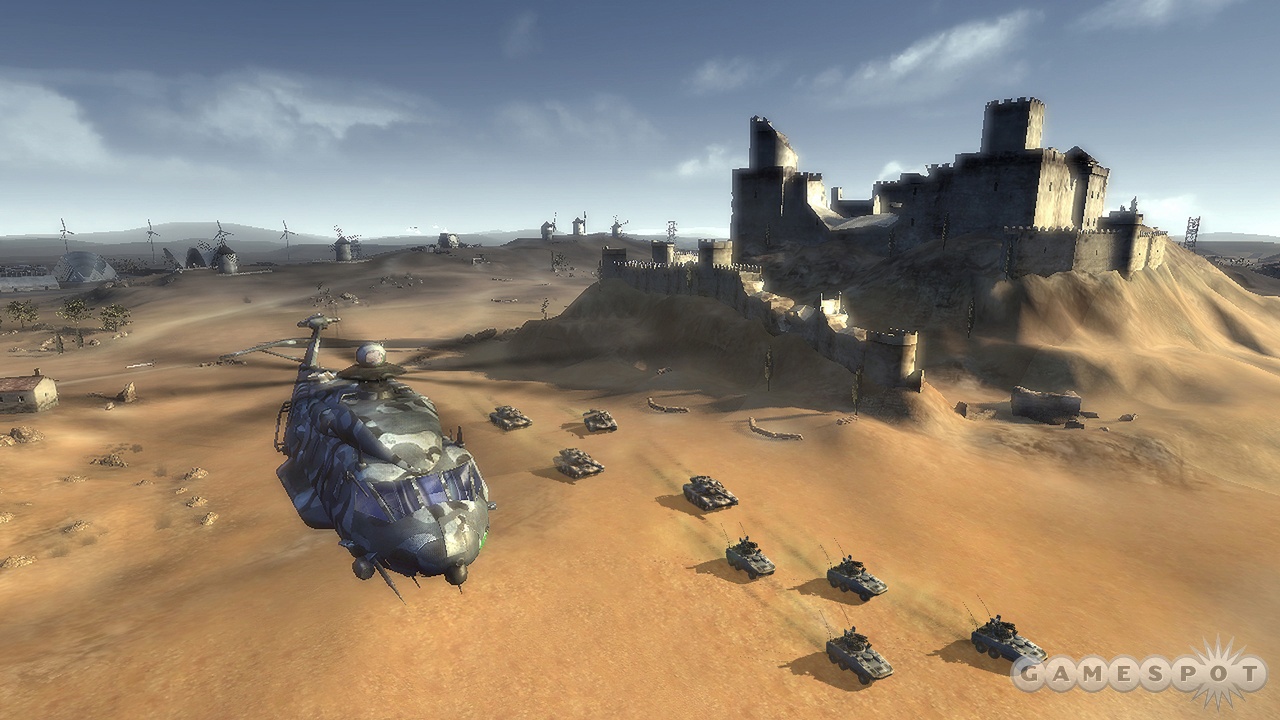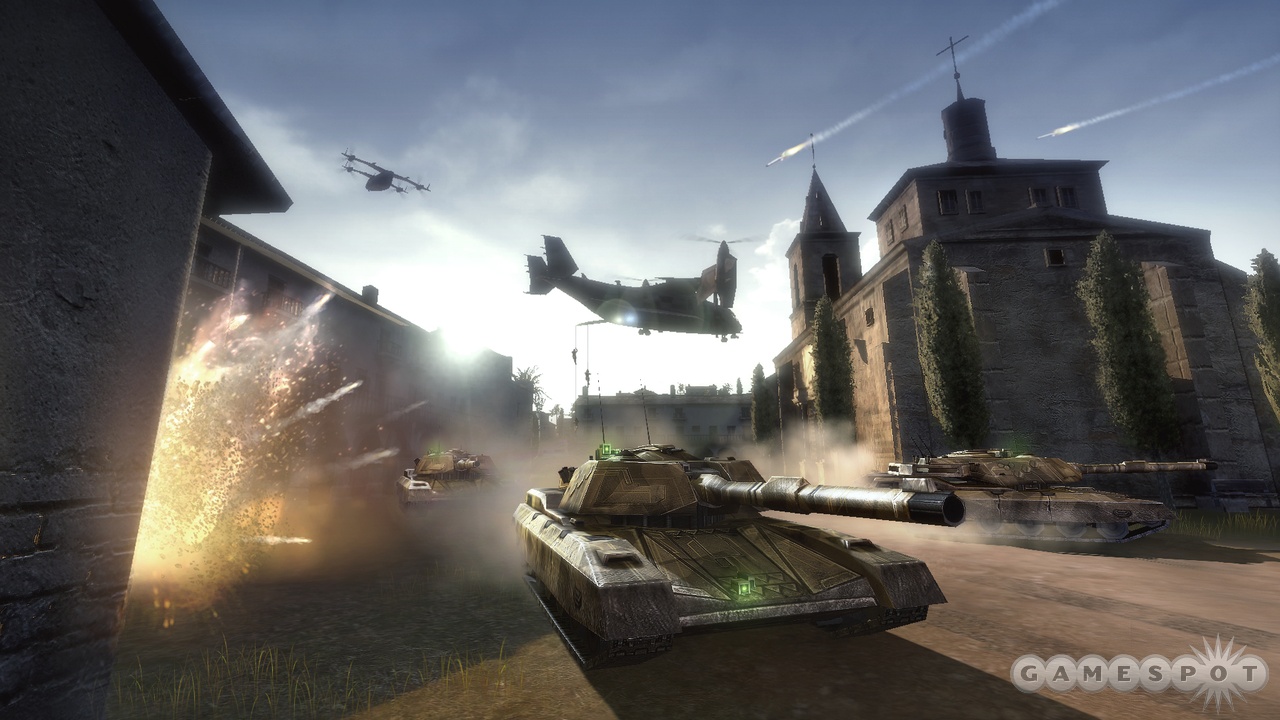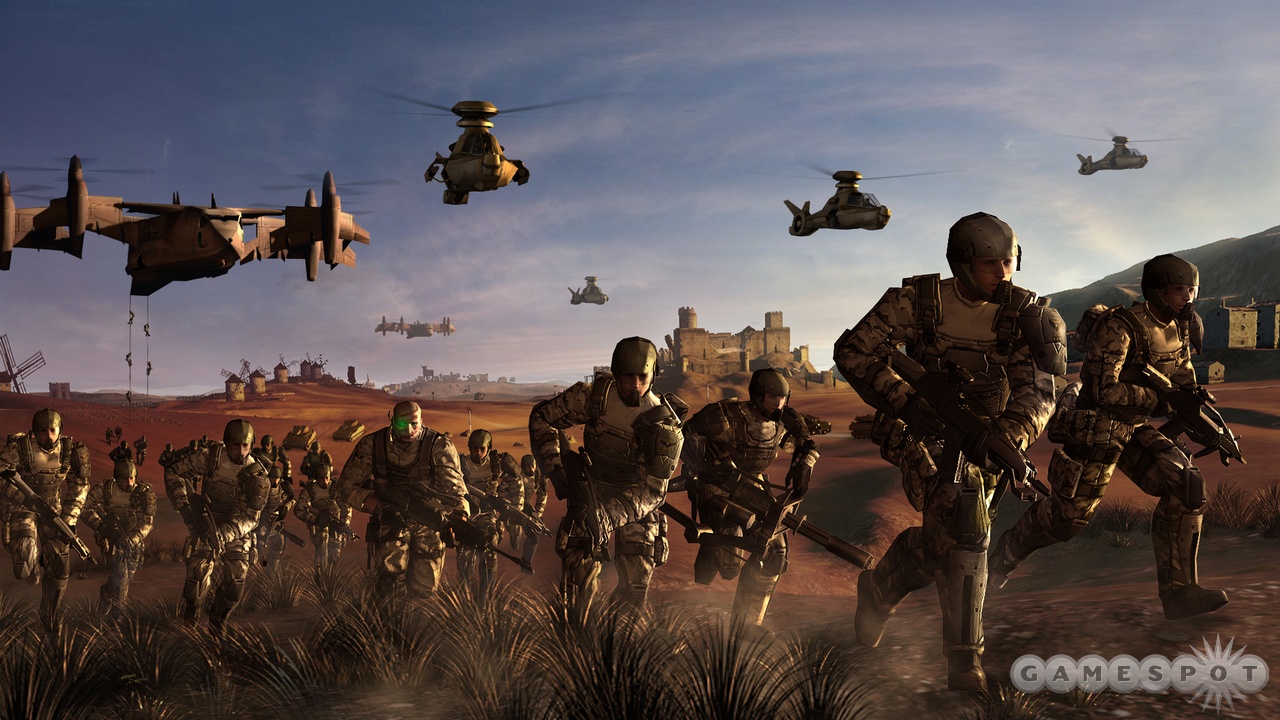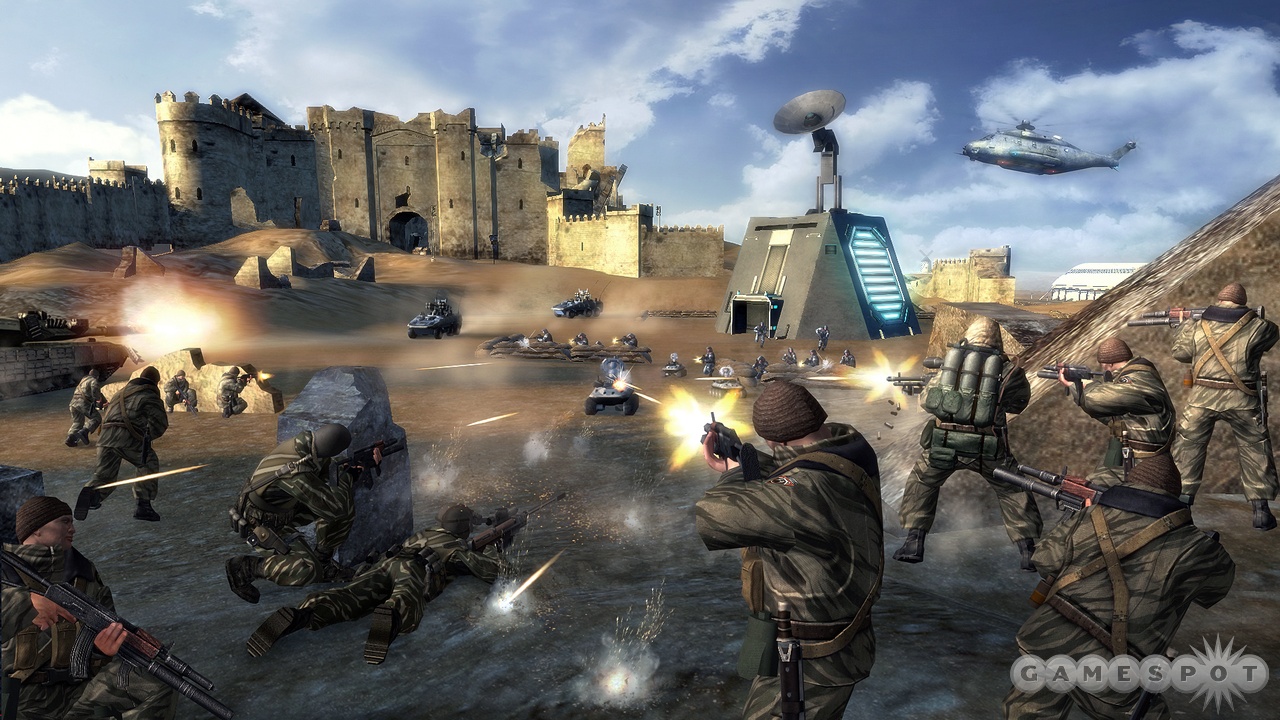Tom Clancy's EndWar Hands-On
Our first hands-on with Ubisoft Shanghai's upcoming strategy game was surprisingly hands-free, but we still delivered massive destruction to our enemies.
Real-time strategy is not a genre designed for standard console controllers, and past attempts to bring PC-based RTS mainstays like Starcraft and Command & Conquer to consoles have met with varying levels of success. Ubisoft's Shanghai studio will circumvent that problem by designing Tom Clancy's EndWar from the ground up on the Xbox 360 and PlayStation 3. EndWar is a near-future strategy game that retains the core combat tenets of the genre, with rock-paper-scissors unit balance and a resource model that ties directly into your battlefield performance. But the controls--especially the game's impressive voice-control system--will make the game more accessible than past console strategy efforts, if Ubi Shanghai is successful in meeting its goals.

We had a chance to go hands-on with EndWar recently at Ubisoft's San Francisco offices, but really, we endeavored to use our hands as little as possible while we played and relied instead on the voice controls. First, we'll fill you in on the game's design. EndWar takes place during a mid-21st-century three-way World War III involving the United States, the newly united European Federation, and Russia. You'll get to play as all three factions during the game, and while they'll all feature roughly the same kinds of units that perform the same functions, there will be minor differences in unit stats and abilities between them all. The US is the most well-rounded of the group, for instance, while Russia's army is a bit slower but more powerful, and the European troops are the fastest at the expense of some durability. Respectively, they're EndWar's humans, orcs, and elves, according to creative director Michael de Plater.
Ubisoft isn't ready to show off the single-player campaign yet, so we got to try a couple of basic one-on-one skirmish matches against de Plater to get a feel for the fundamental gameplay and flow of battle. EndWar will offer two basic match types in multiplayer, annihilation and conquest. The former is a battle royale between two factions where you can take all the available units of your faction straight into battle from the get-go and war for supremacy of the battlefield. Annihilation will actually scale up to 12 players, with six facing off on each side. In that case, each faction will have 18 total units instead of the usual 12, with each player controlling three of them at once. Those battles will be big, we can assure you.
However, we spent our time playing conquest, which is less explosive than the all-out warfare of annihilation but a lot more tactical. Conquest requires you to capture strategic points on the battlefield in order to acquire more troops, upgrade those troops' weapons and equipment, and ultimately win the match. Unlike annihilation's wide array of available units, though, conquest lets you take only three units into a game at the outset. EndWar features all the usual suspects of military strategy--riflemen, engineers, tanks, helicopter gunships, transports, artillery, and so on--and they all have specific strengths and weaknesses against other types of units. Riflemen and engineers are the only units that can capture strategic points, and they can garrison inside buildings for bonuses to damage and firing rate. But foot soldiers are extremely vulnerable to tank attack. Tanks, however, can be decimated by artillery, but gunships can lay waste to artillery with impunity. In short, with only three units available at the start of a match, you'll have to be ready to think on your feet to put the troops you've selected to the best possible use.

Once you get into a conquest game, you'll see roughly five to seven capture points on the map, and your first order of business will be to send your foot soldiers to grab the ones closest to you. In addition to determining the eventual winner of the match, the acquisition of capture points will grant you the ability to bring in troop reinforcements beyond your initial three units. It will also give you upgrades in one of three categories--ground troops, air support, and electronic warfare--that will allow you to do everything from scrambling the enemy's communications to calling in air strikes. The defense of your existing points and rapid capture of the remaining ones will be critical to victory in the conquest mode, since those points literally enable you to bolster your army with the reinforcements and upgrades necessary to stand up to your opposition.
After one faction has captured a majority of the points on the map, the "endwar" phase of the match will begin. This causes a few things to happen. First, a countdown timer will start ticking, and the losing side will have to take some of the winning side's points to stop it. Luckily, the losers will get a couple of bonuses in the form of increased troop morale and potency, and the ability to use a quick strike to eradicate one of the enemy's captured points from the map. Both sides will also gain an air strike ability, as well as a single-use weapon of amazing destructive power simply referred to as a "WMD." This weapon is actually a satellite launcher that fires tungsten rods from orbit to any point on the globe. (You can imagine the destructive potential with this one.) Needless to say, the endwar period of a conquest match is all the more tense and frenetic thanks to these gameplay additions.

So how do you get a handle on all the battlefield goings-on when the action gets this hectic? Unlike in most RTS games, which give you an omniscient camera perspective high above the battlefield, the camera in EndWar is locked to the unit you have currently selected. You can rotate the camera around and get a look at the surrounding area, but there's no detaching the camera to scope out your enemy's movements. You can go to an abstract tactical map of the entire battlefield, which displays your units and strategic points as simple icons--and you can even issue orders here--but you won't get the subtler combat feedback that a ground's-eye view will provide. Playing with standard controls is manageable enough, as you can switch between units by cycling through a bar with the D pad, issue orders by navigating through a series of nested menus, and so on.
We really started getting into EndWar's combat, though, when we tried out the voice-command interface via the standard Xbox 360 headset. You'll simply hold down the right trigger and then speak your orders. The keywords are all lifted from the same nested command menus you can use manually with the controller, and those menus will expand as you provide your commands verbally, in case you aren't sure of the next proper term to say. For example, if your tanks are in the first slot on the unit bar and you want to move them to the foxtrot capture point, you'd simply say, "unit one, move to foxtrot." If you've spotted your opponent's gunships coming in and you want to set your antiair-equipped transports (in the third-unit slot) against them, you'd say, "unit three, attack hostile one." You can also create colored groups out of multiple units, so you could assign all of your foot soldiers to the red group and then say, "red team, move to delta" to pull them all out of battle. Or if your forces are grouped around a point where the enemy has just targeted a WMD strike, you can quickly move them all by saying, "calling all units, retreat."
We've honestly felt that voice recognition was more gimmick than necessity in the past. But EndWar lets you use it so extensively and effectively--the game failed to recognize our commands only a couple of times during our session--that we could see wanting to play the whole game verbally. According to de Plater, there are only around 80 key words or phrases you need to learn, so the learning curve should be fairly gentle. Issuing commands verbally lets you worry less about which buttons to hit and more about the developing tactical situation and how you need to respond to it. Since your opponent can reinforce in seconds and drop a surprise attack on you at any time, you'll clearly have to stay on your toes.

Still several months from release, EndWar is already looking like one of the more robust and accessible console strategy games in recent memory. The game has plenty yet to prove--we haven't seen the single-player campaign at all, nor the ambitious persistent online war mode, and the team is only now beginning to add the distinguishing touches to each faction--but we had plenty of fun playing through the intensely tactical skirmish battles even at this early stage. EndWar is planned for release in the first quarter of 2008, so keep your eyes peeled in the coming months for more information.
Got a news tip or want to contact us directly? Email news@gamespot.com
Join the conversation